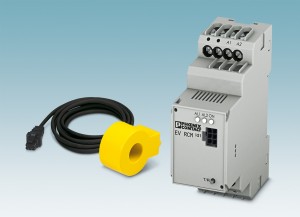 Do you know one common challenge for devices used in areas such as filter and inductor construction, energy distribution and power supply production is Electrical Safety i.e. how to lead the high power through the panel wall safety.
Do you know one common challenge for devices used in areas such as filter and inductor construction, energy distribution and power supply production is Electrical Safety i.e. how to lead the high power through the panel wall safety.
Finding the right wall feed-through terminal block to address electrical safety is a challenge as there are not many suitable solutions for high current and large wire cross-section. It is also unlikely that the manufacturers will choose the feed-through terminal blocks as early as the design stage. This often leads to manufacturers designing their customized solutions out of sheer necessity; thus resulting in problems such as maintaining touch protection or insulating the current bar from the device housing.
The device manufacturers may also face problem obtaining the necessary certification for their devices. If the device is to be used worldwide, IEC 61800-5-1 and UL 1059 certifications are required. Many solutions in the market are unfortunately not adequately certified.
High Current Feed-through Terminal Blocks
Phoenix Contact offers an extensive range of high-current feed-through terminal blocks for various applications. You can find both pluggable feed-through terminal blocks and feed-through terminal blocks for permanent connections. The pluggable feed-through terminal blocks permit quick replacement and are thus service-friendly. In addition, the conductors can be preassembled. However, feed-through terminal blocks for permanent connections are more economical.
Do you know Phoenix Contact has been providing these feed-through terminal blocks for almost three decades?
Device manufacturers can choose the connection option to fit the application: fast push-in connectors, T-lox, conventional screw connectors, or simple bolt connectors. The connection areas range from 4 to 150 mm2 and the current-carrying capacity is up to 309 A.
These connectors come in standard and moulded designs, either with horizontal or vertical connection directions. The moulded version ensures high leakage resistance, even when a small amount of moulding compound is used. The product range provides various connection options for space-saving connections in all installation locations. This means that device manufacturers can flexibly select the connection type, direction, and cross section.
Interested to find out more? Get in touch with us at marketing@phoenixcontact.com.sg!










